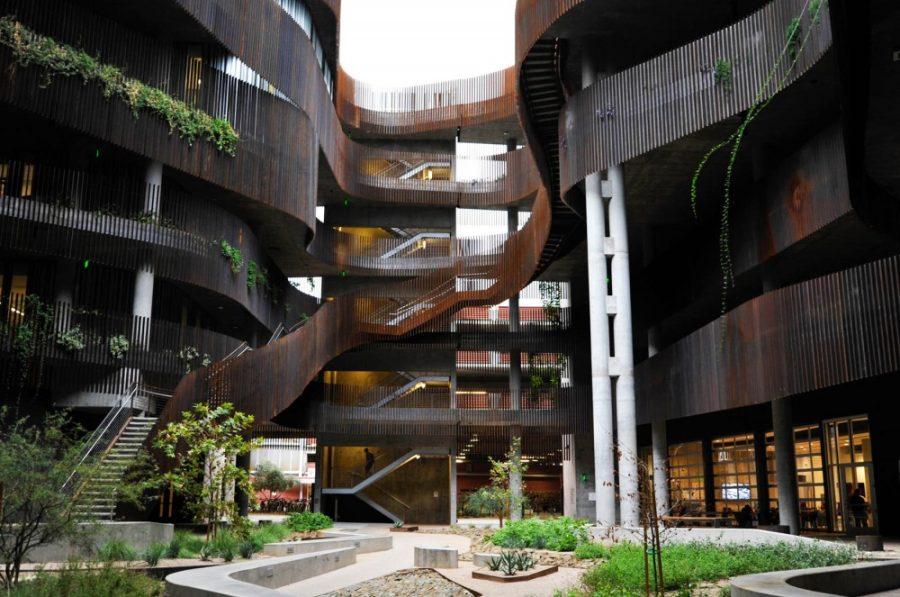The Environmental and Natural Resources 2 building has gained platinum level certification in Leadership in Energy and Environmental Designation from from the U.S. Green Building Council.
The building, completed in summer 2015, is now the largest LEED Platinum project by square feet in Arizona [1] certified under LEED v2009, according to Rachel Gilbert, media and communication specialist for the USGBC.
LEED is a system of certification through the USGBC that bases its certification off a point system correlated to the different sustainability efforts it incorporates.
ENR2’s certification falls in line with UA Planning, Design and Construction’s goal to have all the new buildings achieve a minimum of a LEED Silver certification, according to Peter Dourlein, assistant vice president for UA Planning, Design and Construction.
RELATED: UA’s first sustainability-based rummage sale brings in $9,000
Dourlein said that for ENR2 specifically, there was a goal to achieve platinum. He said because the building was largely for the environmental, earth and animal sciences disciplines, which often research climate change, the building needed to be a flagship for sustainability.
To achieve this goal, the building was designed to conserve energy and water and was constructed to use locally sourced and recycleable materials, according to Dourlein, who oversaw the unit that worked on the design and construction of the building.
“We’re going to keep these buildings for a long time, and so we want them to be economical over their life span and not use a whole lot of energy—not use a whole lot of water,” Dourlein said. “We want them to be healthy spaces that have clean air and views and natural light so that people can be productive there.”
Designing the building involved energy modeling and evaluating various concepts for electric power, cooling, heating, overhang and shading, according to Henry Johnstone, the president of GLHN Architects & Engineers, Inc., the architect and engineer of record for the building.
To achieve LEED Platinum certification, projects must earn a minimum of 80 credits that are determined by the USGBC.
Gilbert said those behind a building can choose which credits they want to focus on during its design, Gilbert said.
ENR2 earned a total of 81 out of 110 possible credits, earning all six credits under the innovation category and all four regional priority credits, according to the building’s LEED scorecard on the USGBC website.
RELATED: Students for Sustainability protest TEP’s proposed rate hikes
Having accomplished the goal of LEED Platinum certification for ENR2, Dourlein said the focus is now on monitoring the building’s performance because it employs technology in its heating and cooling systems that is new to the UA. The data from this monitoring will be used to inform future building projects.
The university has four LEED Platinum buildings and five other LEED-certified buildings, according to Dourlein.
Currently, the UA is working on a new Health Sciences Innovation building, a Bioscience Research Lab and a Biomedical Science Partnership building in Phoenix. All of these buildings are built with the goal of earning at least a LEED Silver certification, Dourlein said.
Dourlein said creating a building that inspires its occupants is important because that inspiration can lead their work.
“We’re going to have that building for 50-100 years,” Dourlein said. “If it can also be inspirational instead of just there, then we’ve really accomplished something and it will matter for a long, long time.”
[1] The article originally stated ENR2 is the largest LEED Platinum project by square feet in Arizona. In fact, it is the largest LEED Platinum project by square feet in Arizona certified under LEED v2009.
Follow Ava Garcia on Twitter.









